Buying the best tools you can afford is always a wise choice, and this is particularly true when it comes to scissors. It’s best to make the investment up front rather than going through many pairs of poor-quality scissors. There are many different sizes, types and qualities on offer when it comes to choosing a pair of sewing scissors, so it’s important to know which pair are right for which job.
Read our guide to the best sewing scissors to learn more about the different models available, and browse our list of the best sewing scissors to buy.
You can also read our round-up of 10 beautiful embroidery scissors.
Choosing sewing scissors
Firstly, you need to decide what you’re going to use them for. Shears are ideal for cutting fabric, and you’ll need ones with a bent handle if you're cutting out fabric on a flat surface. If you’re going to be working with fine or slippery fabrics, choose a pair with serrated blades, which will grip the fabric, giving a better cut. General purpose and small scissors are more suited for cutting and snipping. Try them out before you buy if you can.
You need to make sure they feel right and are comfortable in your hand, and that you have good control. If you’re left handed then look for a specialist pair – they’ll work much better for you.
Scissors with tempered blades are high quality and strong and stainless steel blades are more lightweight but sharp and rustproof. Make sure they give a smooth cut from the back of the blades to the points. It’s better if they have adjustable bolted joints that secure the blades. Blades do work out of alignment, so it’s best if you can correct this from time to time.
Looking after sewing scissors
Three things blunt dressmaking scissors: dust (or lint from fabric), moisture and being used to cut anything other than fabric. It’s important to look after your scissors. Wipe your scissors clean with a dry cloth after each use – this is especially important after cutting synthetic fabrics as the lint is abrasive and can dull the blades. Don’t allow moisture to come into contact with them and never put them in the dishwasher.
Always keep the cutting blades sharp – get them sharpened when the blades become dull. You should occasionally oil the pivot screw with a tiny drop of sewing machine oil then wipe the blades with a soft cloth and make a few cuts on scrap fabric to remove any surplus. Never use your fabric scissors for cutting paper as this will blunt them quickly – label them as a reminder!
For more ways on how to care for your scissors, learn how to make your very own scissor keeps!
Specialist scissors
Paper scissors are for cutting out patterns – they need to be sharp and accurate. Appliqué scissors are especially designed for close trimming; the ‘duckbill’ blade allows the scissors to glide between layers. Machine embroidery scissors have handles, which are curved to one side so you can accurately trim loose threads. Buttonhole scissors have a special adjustable screw for securing them partially open for a precise cutting length.
Looking for more sewing tips and advice? Check out our sewing machine tips and tricks, learn how to use a sewing pattern or read our sewing for beginners guide.
6 best sewing scissors
Bent-handled shears
Gingher 8 Inch Featherweight Bent Handle Scissors
- Buy now from Amazon (£21.50)
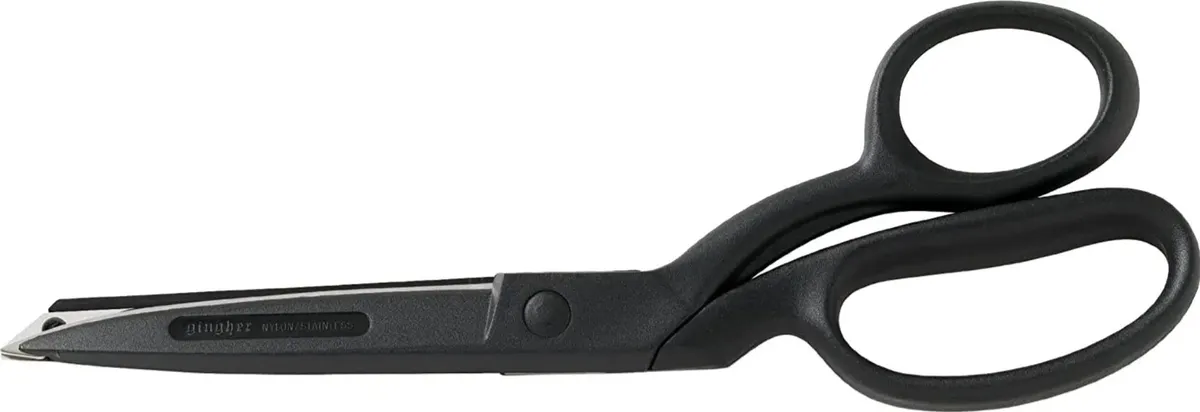
Bent-handled scissors have an angled lower blade to allow your hand to be in a comfortable position whilst keeping the fabric flat. Some bent-handled shears have micro-serrated blades which makes cutting thick or slippery materials more accurate as the blades grip the fabric.
They usually range from 18-25cm, with this pair from Gingher measuring just over 20cm. These sewing scissors also feature a lightweight design, weighing roughly 56g.
Gingher has a range of bent-handled shears to consider - if you'd rather opt for steel sewing scissors, take a look at the brand's bent-handled dressmaker's shears.
Drop-forged shears
Dos Plumas Tailor's Scissors
- Buy now from Amazon (£19.79)
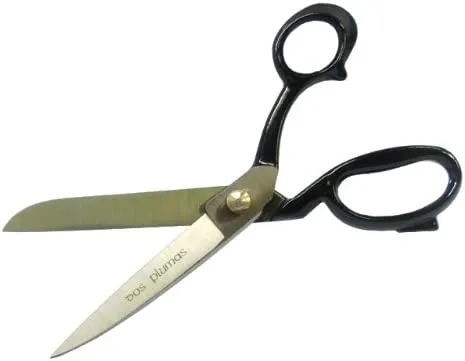
The best scissors are hot-drop-forged from steel, which means the steel is heated and shaped into one continuous piece to make one half of the scissors. It is then trimmed, hardened, tempered, ground and polished. These scissors will last for years and are a great investment.
For your own drop-forged shears, consider these Italian made Dos Plumas tailor's scissors, featuring side-bent black handles and polished blades. We love the traditional look, and they're sure to become a well-used, much-loved staple in your sewing kit.
General-purpose shears
Fiskars Classic Universal Scissors
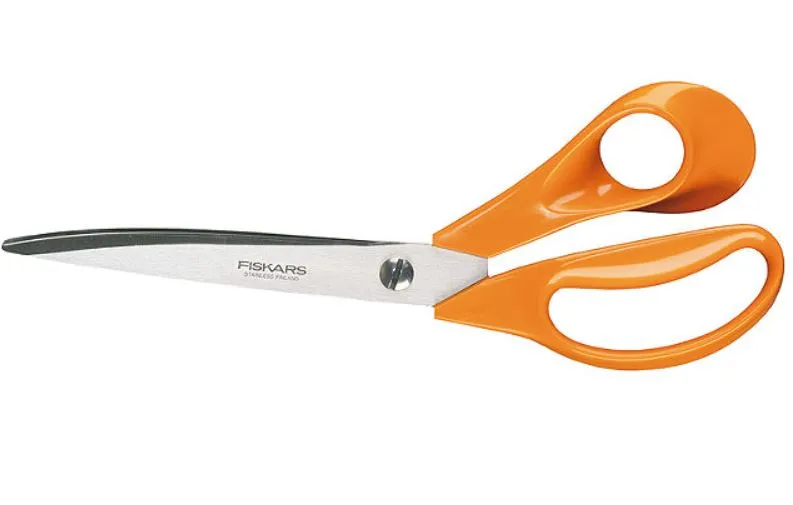
General-purpose scissors are great for all sewing uses and come in a range of sizes, some with serrated edges. They can be used for cutting fabric and are also perfect for trimming twine and ribbons. Soft-touch scissors have a spring rather than a hinge, meaning they need less pressure to cut.
Invest in these classic scissors from Fiskars for a trusty pair to cover a range of craft, sewing and office tasks.
Tailor's scissors
Taylors Eye Witness Gilt Handle Shears
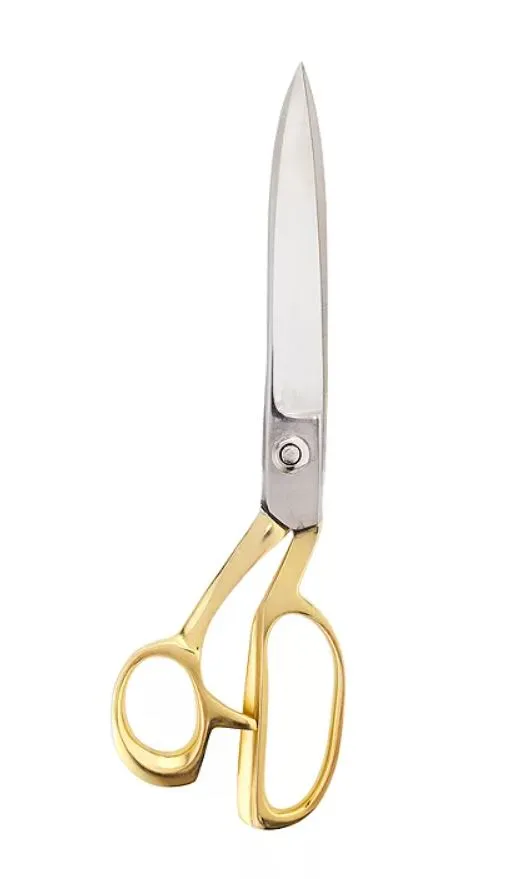
Tailor’s scissors, also called trimmers or sewing scissors, have tapered blades with one pointed and one rounded tip; the blunt tip prevents the fabric from snagging. They are lighter than dressmaking shears and are used for tasks such as snipping and trimming seams.
With an overall length of 25cm, these striking scissors from John Lewis are ideal for any dressmaking and tailoring tasks.
Left-handed scissors or shears
Fiskars Universal Left Handed Scissors
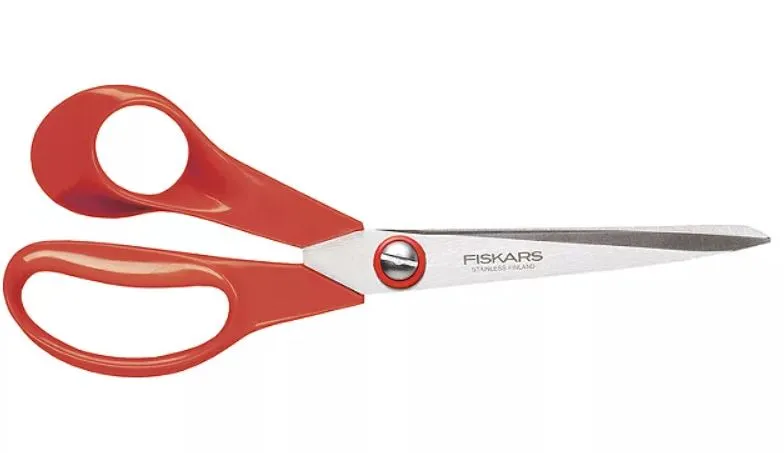
Scissors have overlapping blades, so aren’t symmetric. If right-handed scissors are held in the left hand, the cutting blade is forced apart, and the cutting edge is behind the top blade so you can’t see what is being cut. Left-handed scissors will give a better result than ambidextrous scissors.
Give these left-handed sewing scissors from Fiskars a try. As well as working well for your sewing needs, these scissors should come in useful for all of your craft and paper cutting jobs too. They should even work on laminated materials so they're a handy pair to have around.
Small scissors
Swan Embroidery Scissors
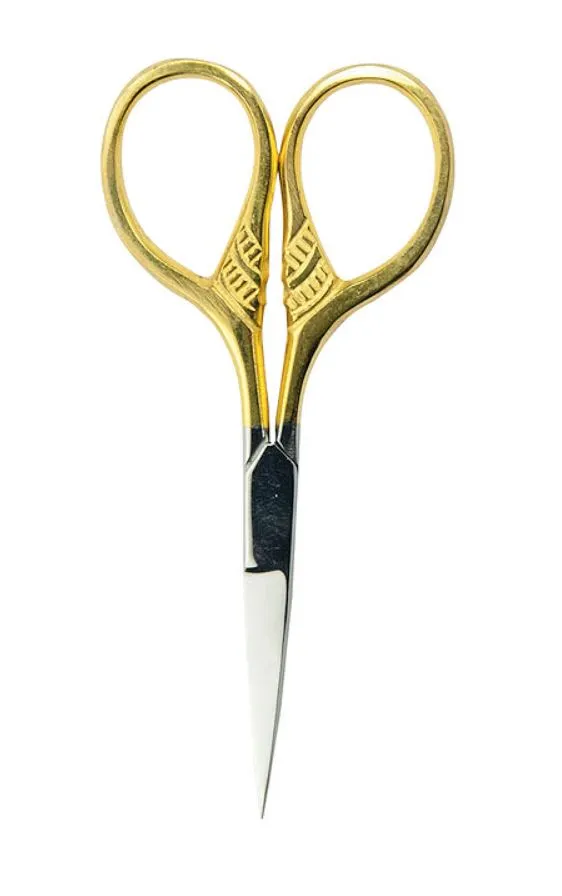
Small scissors are perfect for precise, quick cutting jobs including snipping threads, clipping, notching, trimming fabrics, cutting ribbons and braids and delicate appliqué. Ideally, keep one pair by your sewing machine and one on the ironing board so they’re always to hand.
We love these Swan embroidery scissors from John Lewis - as beautiful as they are practical!
On the lookout for festive sewing inspiration? Check out this fun gingerbread house sewing pattern!
